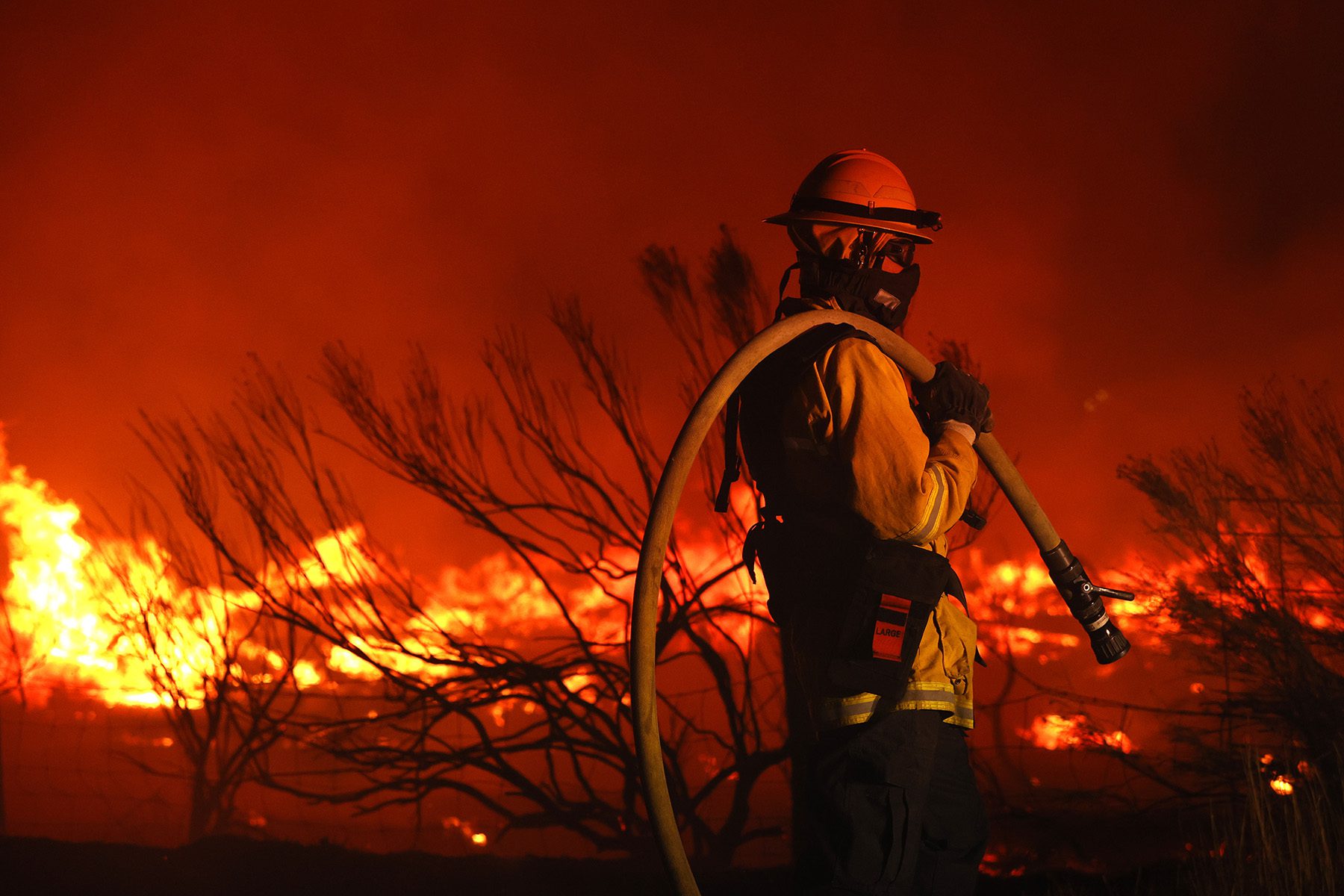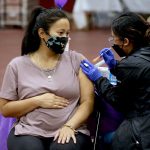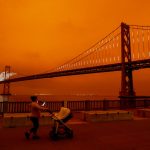Your trusted source for contextualizing the news. Sign up for our daily newsletter.
In 2019, when Maia Earle, a firefighter in King County, Washington, decided she wanted to have children, she went to her doctor to get bloodwork done to gain a better sense of her fertility. The results surprised Earle. Her anti-müllerian hormone level — which indicates a person’s egg count — was lower than normal.
Her levels dropped even further the following year when she was in paramedic school, an intense year of training and little sleep. A second test taken around that time showed that her anti-müllerian hormone was practically nonexistent.
“It just was basically telling me that potentially my ovarian reserve, or the number of eggs I had left, was very, very few. And that was a huge shock. That was devastating,” Earle said.
It prompted her to look at options like in-vitro fertilization, a costly procedure, in order to boost her chances of becoming pregnant.
She started to wonder if her profession as a firefighter — something she’d been doing for several years at that point — had impacted her reproductive health. Earle was in her mid-30s, and she acknowledged other variables could have been at play. But still, it nagged at her that this fertility struggle may be impacting other firefighters who wanted to get pregnant.
“I started digging, and there wasn’t a lot of research out there,” Earle said. She did find one study about Danish men who were firefighters, who were found to have an increased risk of male infertility. “I deduced if it’s affecting them, it’s most likely affecting our female firefighters as well.”
Up until a few years ago, research on the reproductive health of firefighters who can become pregnant was practically nonexistent. Eighty-five percent of research on firefighter health has happened just in the past decade, said Sara Jahnke, a senior scientist with the Center for Fire, Rescue & EMS Health Research at the National Development & Research Institutes. But even then, most of it has focused on a specific group.
“There’s this huge growth [in research], but the downside is … that a lot of that has been focused on White males, because that’s the largest proportion of folks in the fire service.”
-
More from The 19th
- This program is blazing a trail for women in wildland firefighting
- Millions of families face fertility challenges. A bipartisan House caucus aims to expand access to treatments.
- ‘This is our new normal’: Fertility treatment advocates are gearing up to fight abortion bans and personhood laws
To remediate that trend, in 2017, the center started a study of over 3,000 women firefighters in North America (it did not include trans or nonbinary people, many of whom are also impacted). The group of women firefighters, who were from the United States and Canada, completed two web-based surveys in 2017 and 2019 and were found through affinity groups and through recruitment and referrals from other participants. Researchers have used information from this cohort to produce studies that analyze trends in birth and pregnancy outcomes.
In 2021, one study found that 22 percent of pregnancies among women firefighters ended in miscarriages, nearly double that of a similar study done with nurses, an occupation similar in levels of stress and long shift schedules. In May 2022, a study using women from the same pool of participants found that compared to the general population, women firefighters were more often found to have lower anti-müllerian hormone levels, like Earle, even when the sampling was adjusted for age.
The latest study, released in December in the peer-reviewed Journal of Occupational and Environmental Medicine, showed that women firefighters had a 40 percent greater risk of having a pregnancy resulting in preterm birth compared to the general public. Premature babies are more likely to have health issues and developmental disabilities.
“All of this indicates that there are exposures that may be associated with being a firefighter that negatively influenced the reproductive health of these women,” said Leslie Farland, an assistant professor at the University of Arizona’s college of public health and one of the study’s co-authors.
While researchers can’t pinpoint which variables are impacting reproductive health, they do have some ideas, including exposure to high temperatures, which in other studies has been shown to negatively impact maternal and fetal health. The nature of shiftwork, where firefighters could be working 24-hour days, could also be a factor. They are also exposed to endocrine -disrupting chemicals — like PFAS, often referred to as forever chemicals — which may play a role, too.
“We also know that being a firefighter is incredibly stressful,” Farland said. “They’re exposed to traumatic events which can have a negative impact on reproductive health.”
In the latest study they were able to look at different kinds of employment status ranging from career firefighters to volunteers. They also looked at differences between structural firefighters, who battle blazes in buildings, versus wildland firefighters, who mainly work seasonally and on wildfires.
The research found that volunteer firefighters, who represent 65 percent of the workforce, were at greater risk of experiencing a pregnancy resulting in a preterm birth than career firefighters. The miscarriage study also found that volunteers had a higher risk.
“One hypothesis that we’ve been thinking about is this idea that volunteer firefighters may not necessarily have the same equipment or training as career firefighters. And so their exposures, while not as frequent, may be different than career firefighters,” Farland said.
The latest study found no correlation, however, between being a wildland firefighter and having a greater risk of preterm birth. This could be because of exposure to different sorts of chemicals in structural fires, or differences between fighting fires more seasonally and in open space. But, it could also be due to the composition of study participants, who were mostly structural firefighters.
“Wildland is definitely receiving attention [in health studies], but we just don’t have the data on it yet,” said Jahnke, who co-authored the study. “It’s hard to collect data from that group — to even catch them for a data collection.”
Earle was able to conceive twins through IVF, and had another child after that. With this early evidence pointing to a correlation between fertility and pregnancy complications, people like Earle are becoming more vocal at their own departments about the need for better policies and coverage for care like fertility benefits.
“Research shows that we are more likely to suffer from miscarriage or preterm birth, or low birth weight, and for the men, lowered sperm count and motility. And I would hope that they would look at this as anything else duty related,” Earle said. “There’s enough reasonable evidence, I don’t think it’s a ridiculous thing to offer at least one round of fertility treatment.”
Earle has started her own nonprofit, the Beltane Guild — named for the Gaelic word associated with both fire and fertility — which helps provide small grants to people paying for fertility treatments and has focused on creating better family planning and reproductive health policies for firefighters.
One roadblock Earle has encountered in Washington is that other city employees do not receive fertility benefits. “But we are also hoping that they recognize that our job is just completely different from somebody who works a 9 to 5 at the office,” she said.
Earle and Stephanie White, a veteran firefighter who now sits on the board of the Beltane Guild, have assisted departments across the country in crafting family planning policies to better reflect the needs of pregnant firefighters.
White, who has been a firefighter for 17 years, said many departments still don’t have policies, and those that do take a bare-bones approach. Some are grappling with what it means to have a woman for the first time at their department, she said.
Women didn’t start working in fire departments until the 1970s, and today they make up only 5 percent of career firefighters. There is no data available on the number of people who identify as trans or nonbinary in that workforce. The number is higher for wildland firefighting where they comprise about 12 percent of the workforce.
“Since so many people are hiring maybe their first female ever, the big conversation is going to be about discrimination,” White said. “What do you do with a solo female who’s got no one to talk to?”
Slowly, thanks to new research, the conversation is starting to change.
“You have so many male leaders in the fire department that it just was not something that they ever considered to be a need,” White said. “We’re just now seeing women kind of standing up on their own two feet and saying, ‘No, this is a need and a right. We deserve to have policies that protect us.’”






